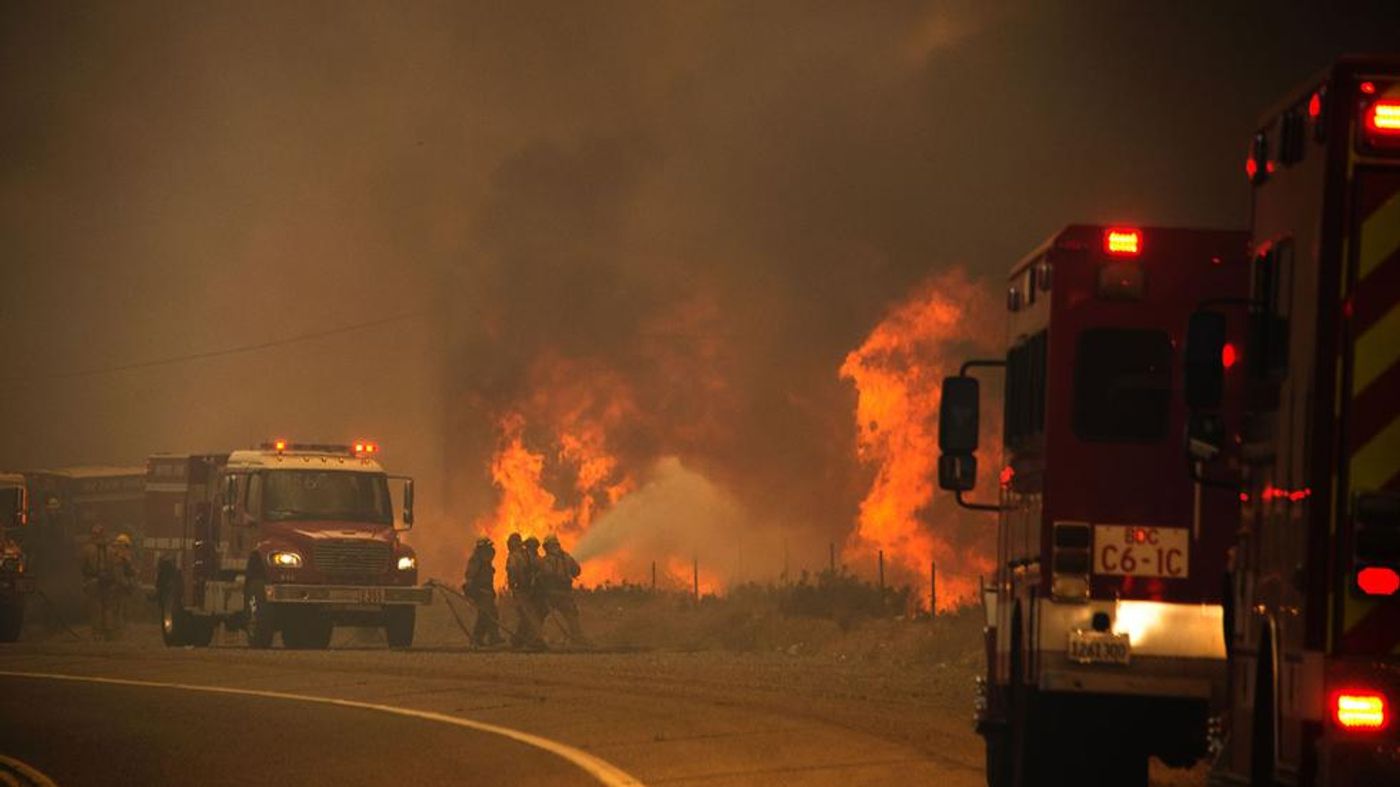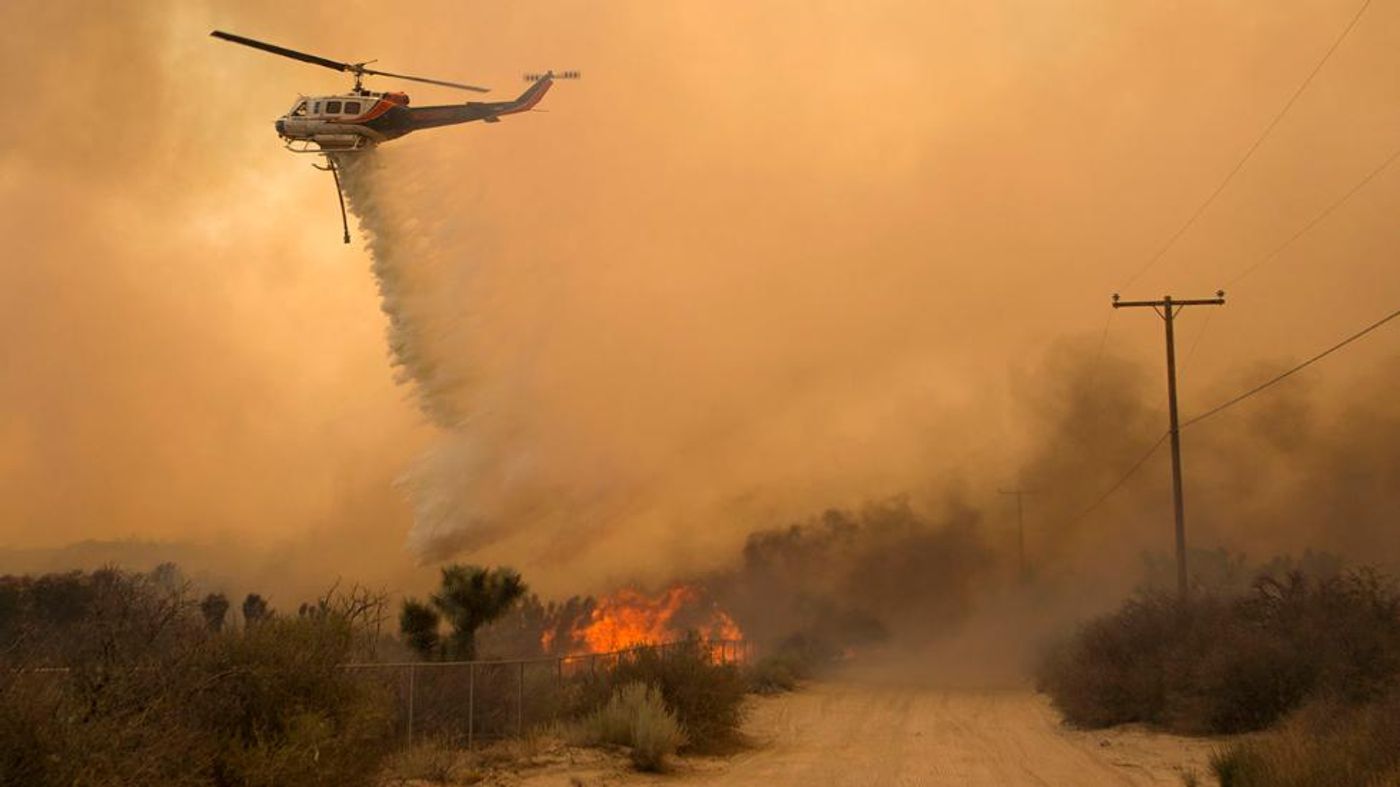More than 82,000 people from 35,000 homes were ordered to evacuate from their homes as the Blue Cut fire raged through rural San Bernardino County, about 60 miles east of Los Angeles. The flames started early Tuesday, and twenty-four hours later, officials acknowledged that the 30,000-acre blaze was zero percent contained. Even by Thursday morning, only four percent had been contained, prompting California Gov. Jerry Brown to declare a state of emergency.
"In my 40 years of fighting fire, I've never seen fire behavior so extreme," Incident Commander Mike Wakoski told the Associated Press.
Thankfully no residents have been harmed, although two of the six San Bernardino Fire Department firefighters who were trapped while defending property and helping evacuate several hundred homes were injured.
“We were fully engulfed in smoke,” firefighter Cody Anderson told KCBS-TV, as reported by the Associated Press. “It was really hard just to see your hand in front of your face. We just hunkered down and sat there and waited for the fire to blow over.”
Forty nine square miles have been scorched. "It hit hard. It hit fast. It hit with an intensity that we hadn't seen before," San Bernardino County Fire Chief Mark Hartwig told the AP. "There will be a lot of families that come home to nothing." The dry vegetation is like firewood, said fire information officer Sean Collins. "It burns that much quicker, that much hotter. The rate of travel is extremely fast," he said.
The fire continues a pattern of wildfires that have plagued California throughout the year, brought on by its previous five years of drought. Park Williams, a bio-climatologist at Columbia University’s Lamont-Doherty Earth Observatory, comments on the situation, saying: “Global warming is absolutely contributing to what we’re seeing in California this year, and more broadly, to the increases in fire activity that we’ve seen over the past several decades throughout the western United States.The relationship between fuel dryness and fire activity is exponential. This means that as drying occurs, the effects on fire are increasingly extreme.”
Sources:
The Washington Post,
The Weather Channel,
Fox News










